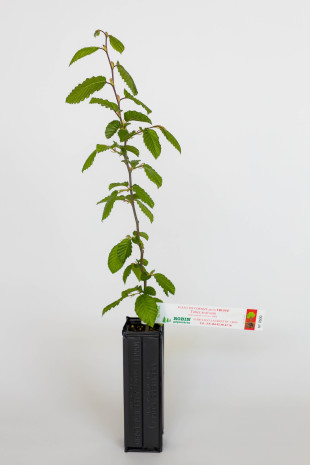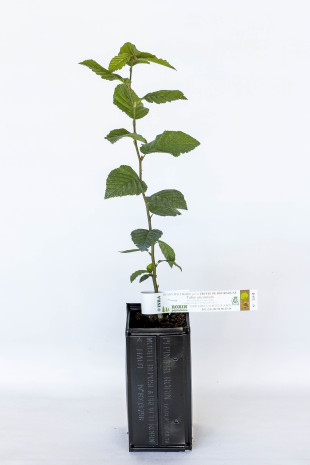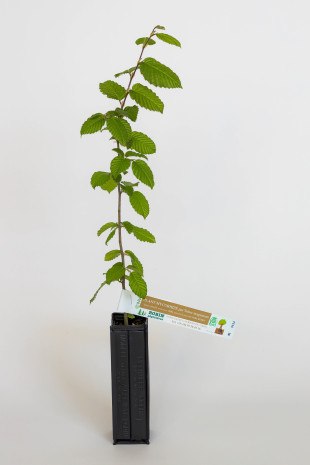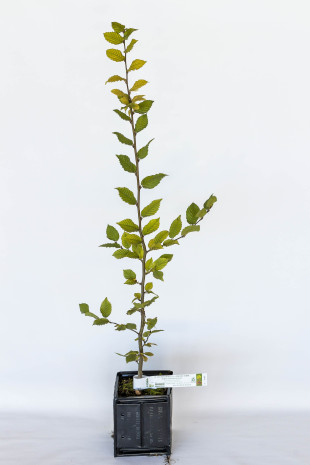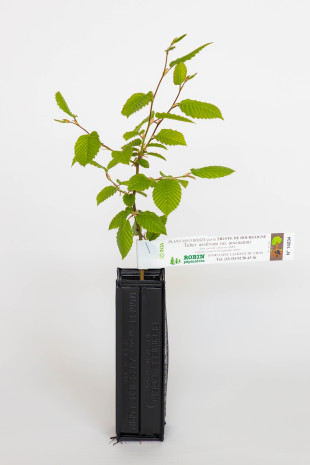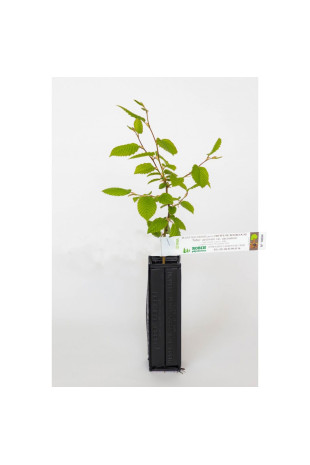Truffle hornbeam
ROBIN Nurseries offers truffle hornbeam plants produced and mycorrhized under the control of INRA (Institut National de la Recherche Agronomique). This tree is an excellent host for different species of truffles: Tuber melanosporum, aestivum and magnatum in particular. Resistant to diseases and easy to maintain, the hornbeam allows the plantation of truffle hedges and truffle orchards with diversified species. We offer two species of hornbeam, natural symbionts of the truffle:
♦ the common hornbeam (Carpinus betulus) mycorrhized with Burgundy truffle, black truffle or white truffle,
♦ the east hornbeam (Ostrya Carpinifolia) mycorrhized with Burgundy truffle or black truffle.
Truffle hornbeam plants ready for planting
Truffle production from a hornbeam plant
In truffle farming, hornbeam has several advantages. In particular, it is considered an intermediate species between hazel and pubescent oak. Indeed, it is later than the hazel tree, but earlier than the white oak. The truffle hornbeam also requires a limestone soil.
Aptitudes of mycorrhizal hornbeam to produce truffles
From its intermediate behavior between oak and hazel, hornbeam proves to be an excellent truffle species. Its root pivot ensures its robustness while its winter vegetative rest allows it to store the reserves necessary for its development from the following spring. Like the oak, it does not have suckers and offers a perennial production. Finally, one should note its hairy root system (similar to that of the hazel tree).
If it is sometimes planted in hedges (it is then called hornbeam), the hornbeam finds all its interest in truffle growing as soon as it benefits from a very calcareous soil (PH > 7.5). Planted alone (250 to 400 plants per hectare), it offers an intermediate yield between those of hazelnut and downy oak. In addition, hornbeam provides early production (sometimes as early as its third year).
Common hornbeam or hop hornbeam: Which to choose in truffle farming?
The choice will depend on the characteristics of your soil and terrain. Parameters to consider include:
- exposure: east hornbeam requires better exposure than common hornbeam
- altitude and climate: down to -25°C for common hornbeam, -15°C max for east hornbeam
- soil PH: common hornbeam requires calcareous soil (PH above 7.5)
- soil type: clay-limestone and cool for common hornbeam, dry and draining limestone for east hornbeam
What truffles to grow from a hornbeam plant
Thanks to a process of controlled mycorhization developed in the laboratories of our nursery, we offer you high quality truffle hornbeam plants (controlled and certified mycorhization by INRA, plants raised in anti-chignon cups). These truffle plants are specifically dedicated to the cultivation of the Burgundy truffle (Tuber uncinatum) which likes to live in osmosis with the hornbeam. The production of black Périgord truffles (Tuber melanosporum) is also possible as well as summer truffles (Tuber aestivum). Finally, please note that we exclusively offer plants for the cultivation of the famous white truffle (Tuber magnatum).
![]() In addition to truffle hornbeams, Robin Nurseries cultivates different truffle tree species. If you have trouble choosing the tree and the variety of truffles that are most appropriate for your plot of land, contact our experts. They will take the time to advise you and guide you towards the species and varieties that are best suited to the characteristics of your truffle orchard project.
In addition to truffle hornbeams, Robin Nurseries cultivates different truffle tree species. If you have trouble choosing the tree and the variety of truffles that are most appropriate for your plot of land, contact our experts. They will take the time to advise you and guide you towards the species and varieties that are best suited to the characteristics of your truffle orchard project.
